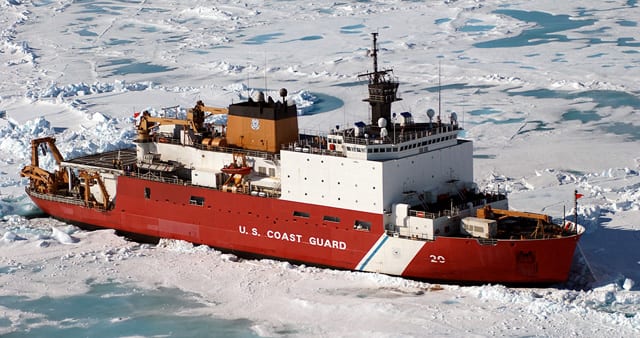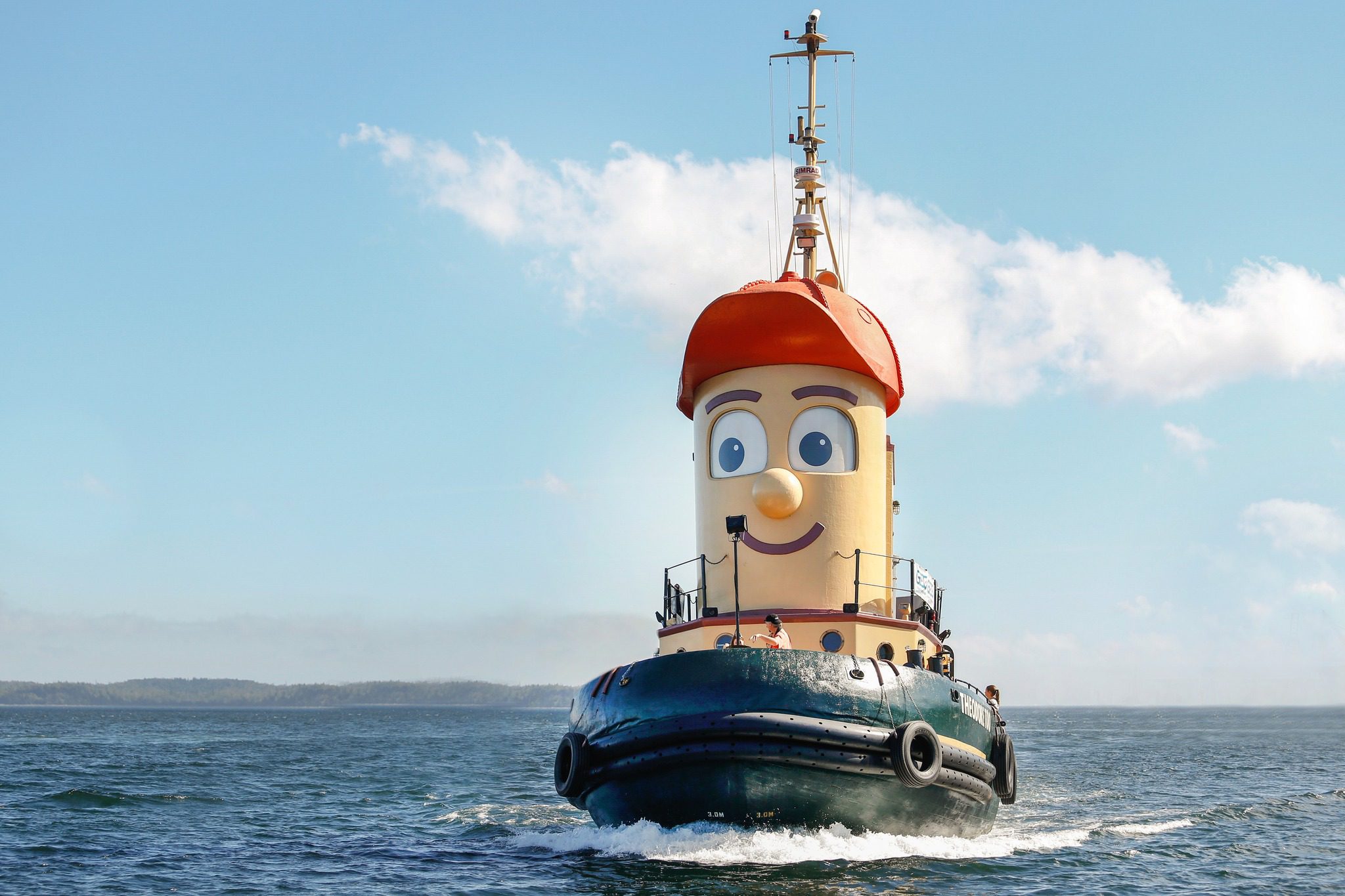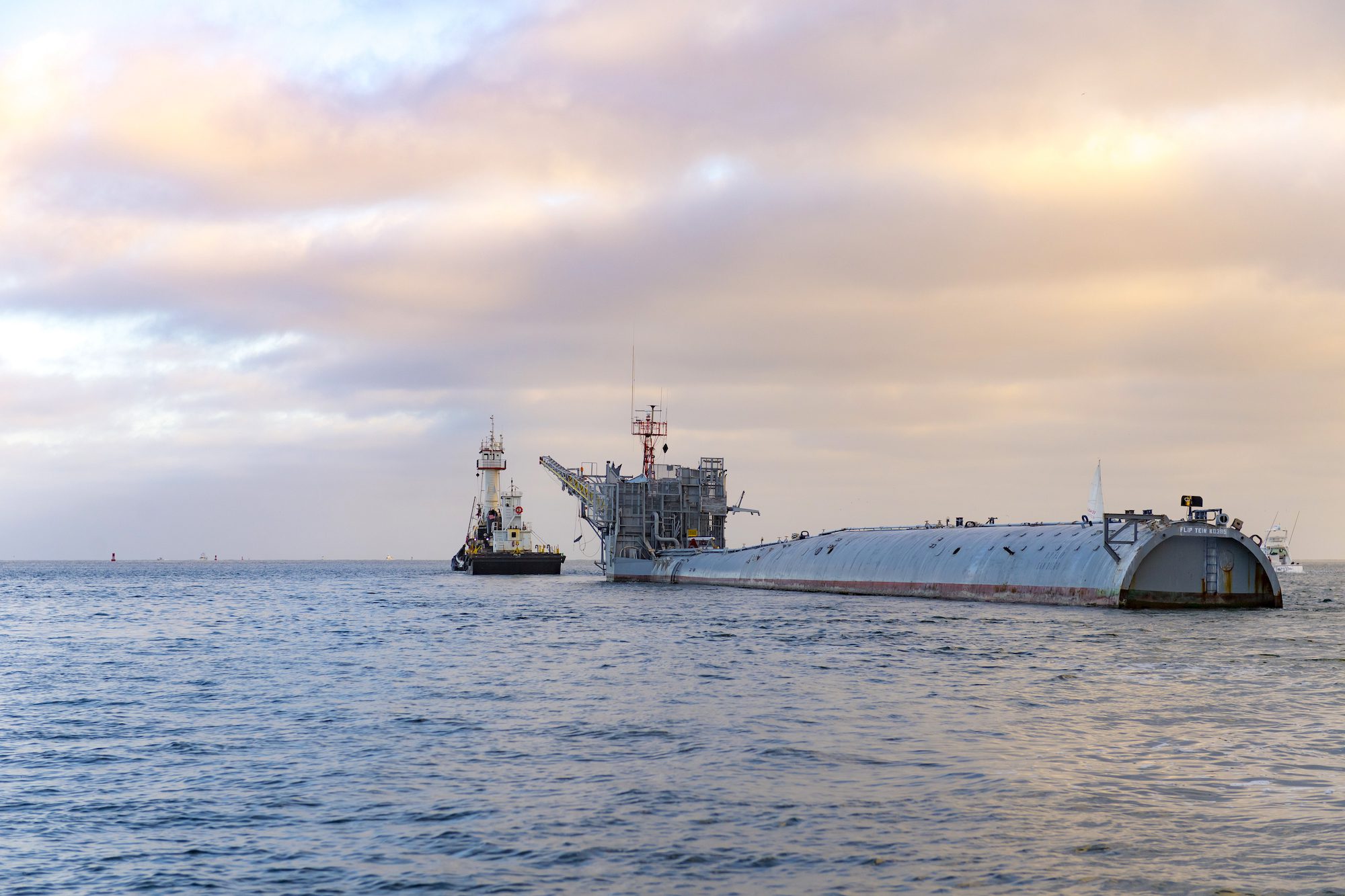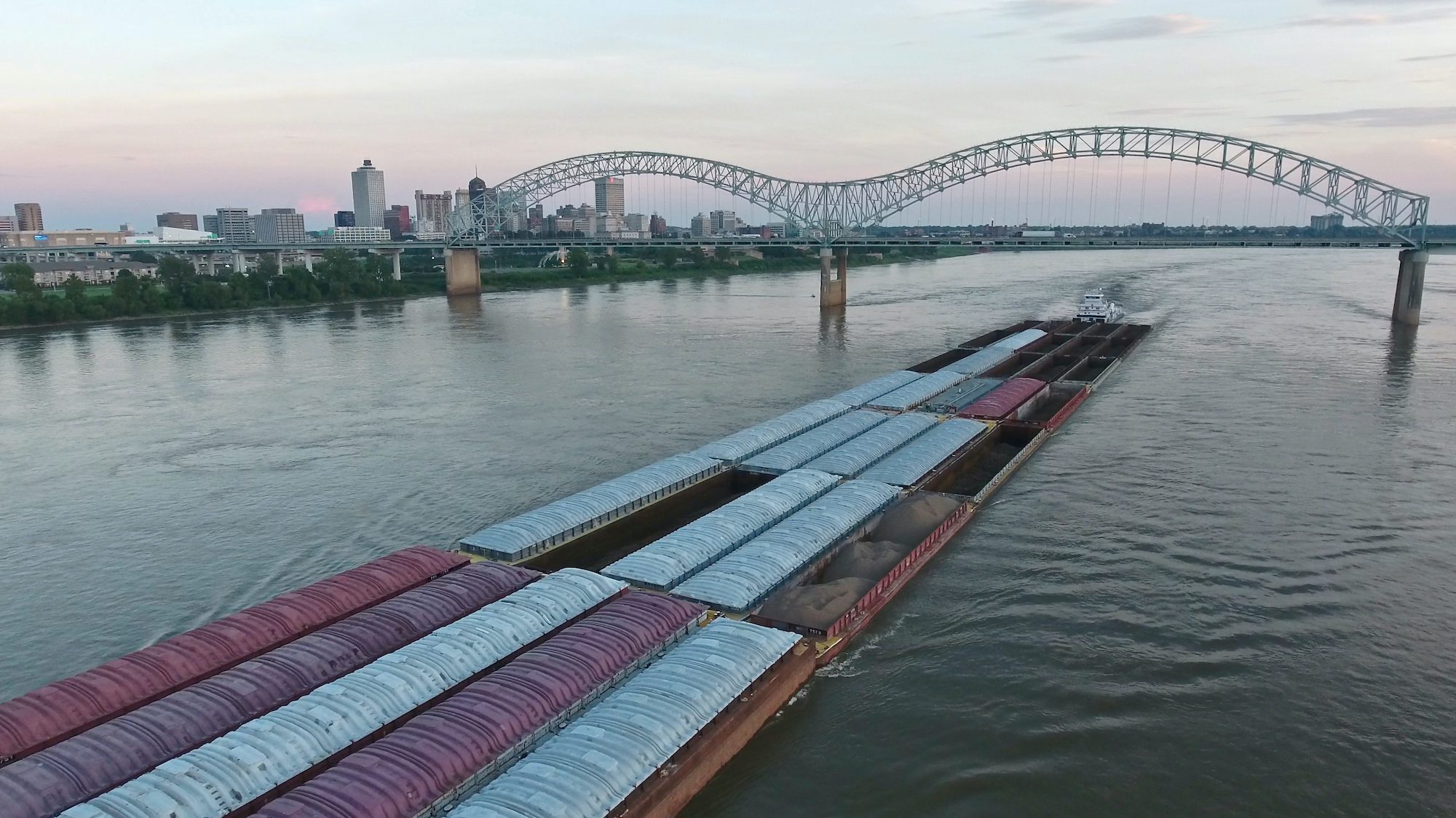The U.S. Coast Guard Healy Class Icebreaker HEALY (WAGB 20) sits in the ice, about 100 miles north of Barrow, Alaska, in order to allow scientists onboard to take core samples from the floor of the Arctic Ocean on June 18, 2005. (U.S. Coast Guard photo by Public Affairs Specialist 2nd Class NyxoLyno Cangemi) (Released)
By Jason Tama, Heather Greenley and David Barata,
As the United States readies to assume chairmanship of the Arctic Council today, it is timely to assess where the United States stands in terms of its ability and commitment to lead in the region. While there are many important elements of Arctic leadership outlined in the U.S. National Arctic Strategy, the ultimate metric of state leadership comes not from policy alone but also willingness to commit the resources needed to advance national interests and shape favorable global norms for peace, stability, and responsibility. In this context, the United States has yet to demonstrate a strong commitment to 21st century Arctic leadership. Nowhere is this more apparent than in the decaying state of the U.S. heavy icebreaking “fleet”—currently consisting of just one operational heavy icebreaker—and the lack of a credible national strategy to expand, much less sustain, this capacity.
Although the Arctic Council framework focuses specifically on shared, non-military interests, it would be a mistake to assume the region will be immune from future incidents, whether from eventual increases in tourism and shipping, energy development, or even limited geopolitical conflict. The United States must sustain heavy icebreaking capability to assure year-round access to the region and to be ready to respond in the event of a safety, security, or environmental threat.
Commercial activity in the Arctic
While commercial activity in the Arctic remains limited today, signs of increased economic investment are on the rise, including Royal Dutch Shell’s announcement of intent to resume Arctic drilling later this year and Crystal Cruises’ planned 2016 traverse of the Northwest Passage with its 820 foot, 1,000 passenger cruise ship Crystal Serenity. The Arctic’s vast untapped resources and opening sea lanes are beginning to drive previously-unheard of levels of human activity.
Some have suggested companies like Shell can and will invest in their own icebreaking and emergency response capabilities for Arctic drilling, rendering a U.S. government asset superfluous. This is a shortsighted view that fails to recognize the fundamental risks associated with abdicating prevention and response capabilities solely to the private sector.
While a single icebreaker obviously has neither the capacity nor capability to clean up a large oil spill in the Arctic, or anywhere else for that matter, in certain scenarios it could help prevent a spill from happening in the first place, mitigate the severity of a spill, and provide a means to ensure on-scene government oversight and command of any incident.
In the case of Arctic tourism, it is important to recognize that a mass rescue operation involving hundreds of passengers on a cruise ship—already one of the most difficult scenarios for search and rescue professionals—becomes exponentially more difficult in the remote and harsh Arctic environment.
Finally, although unlikely in the near-term, a future scenario can also be envisioned in which U.S. Navy surface ships need access to the Arctic, and icebreaking capacity is necessary to execute the mission. This is perhaps a distant possibility in the context of today’s Arctic but is a contingency for which the nation should be prepared in the future.
Access to the polar regions
The Coast Guard’s nearly 40-year old and recently reactivated Polar Star is the only U.S. icebreaker with the size and horsepower to provide unfettered access to the polar regions. The reactivation of this vessel, built in the 1970s, cost nearly $60 million and is estimated to have extended its lifetime by only 7 to 10 years. This presents a difficult and unique challenge in an emergency; if for example, the aging Polar Star has a machinery failure and gets stuck in the ice, the United States does not have the means to extract it and may have to resort to assistance from a foreign country. Coast Guard Commandant Admiral Paul Zukunft recently put it bluntly, saying the Coast Guard “has no self-rescue for its Arctic mission, for its Antarctic mission.”
While dozens of small and medium sized icebreakers operate successfully in other parts of the world, heavy icebreakers—generally classified as those that exceed 45,000 horsepower—are needed to assure unrestricted access to the Arctic at any time of the year. Additionally, for the United States, heavy icebreaking capacity is also needed for missions like the annual resupply of McMurdo Station in Antarctica, an operation sponsored by the National Science Foundation and executed by the Coast Guard.
Sustaining the capability to access any region of the globe has been a fundamental tenet of U.S. national security policy for decades, and the Arctic should be no exception. The United States is falling behind other Arctic nations, like Russia, that have demonstrated an enduring commitment to maintaining access to the Arctic with heavy icebreakers.
These investments may be considered consistent with the size of Russia’s Arctic coastline and associated Exclusive Economic Zone, both of which are substantially larger than those of the United States or any other Arctic Nation. Indeed, there is certainly room to debate how many heavy icebreakers the United States will ultimately need in the future. A 2011 Coast Guard study concluded that meeting the tenets of the 2010 Naval Operations Concept—which calls for constant, year-round presence in both polar regions—would require six heavy and four medium icebreakers. Likewise, the study indicated three heavy and three medium icebreakers are needed for Arctic presence. Putting the debate in perspective, the Obama administration’s special representative for the Arctic, retired Coast Guard Commandant Admiral Robert Papp, recently gave a keynote address at the Brookings Institution stressing that “we should at least build one,” acknowledging the critical state of U.S. capability.
Replacing the Polar Star presents a unique challenge. Such vessels have not been built in four decades in the United States, and most estimates suggest a 10-year, $1 billion program to build just one in a U.S. shipyard under the federal government’s arduous acquisitions process. This places delivery of a new heavy icebreaker beyond the Polar Star’s remaining service life and adds to the urgency of the current situation.
U.S. engagement in the Arctic
In short, the United States must have the ability to access and engage in the polar regions on its own terms. No entity is better positioned to fulfill this national security imperative than the United States Coast Guard, which has the authority and organizational ethos to advance high latitude safety, security, and environmental interests without a corresponding threat of excessive militarization. The Coast Guard also remains one of few governmental entities capable of collaborative engagement with the Russians, built on years of maritime cooperation with their border guard.
While the case for icebreaker investment is clear, the Coast Guard lacks the resources to move forward on its own. For the Coast Guard, a new icebreaker is at best a distant runner-up to other recapitalization imperatives within the chronically underfunded service. The Coast Guard’s Medium Endurance Cutters are the cornerstone of the service’s offshore presence in the Western Hemisphere and are even older than the icebreakers. Replacing these 1960s-era cutters is justifiably the service’s top acquisition priority. The question here is not whether the Coast Guard wants new icebreaking capability, but rather how a new icebreaker stacks up against other, more urgent priorities in the context of current budget constraints.
The most appropriate funding solution is one that reflects the full breadth of inherently governmental interests in the Arctic, including safety, security, environmental protection, facilitation of maritime commerce and responsible economic development, national defense, and scientific research. In other words: funding from across the government to deliver a national, multi-mission asset.
The United States is considered an “Arctic Nation,” a term proudly used by policymakers to highlight our intrinsic national interests in the region and a profoundly basic yet important acknowledgement that Alaska and its associated territory above the Arctic Circle are indeed part of the United States. Unfortunately, the United States has yet to advance from this most basic construct of high latitude stakeholder to a proactive leadership and investment posture for the future. Not because of a lack of “skin in the game,” the United States has a legacy of well-documented interests in the Arctic, but a lack of consensus to make it a national priority in the context of the current budget environment.
Whether via national crisis or a comprehensive budget deal, polar icebreakers must eventually become the subject of serious resource discussions, and should ultimately garner broad bipartisan support. At that time, additional funding should be appropriated to the Coast Guard to support the acquisition of the much-needed heavy icebreakers, but not at the expense of its other, more pressing recapitalization programs. Until then, let’s be more realistic about our ability and commitment to lead in the Arctic.
Jason Tama is Federal Executive Fellow, Center for 21st Century Security and Intelligence and Heather Greenley is a Senior Research Assistant within Brookings’ Energy Security and Climate Initiative. David Barata is a Senior Military Fellow at the Center for New American Security.
Republished with permission from Brookings Institute. Original article.

 Join The Club
Join The Club











